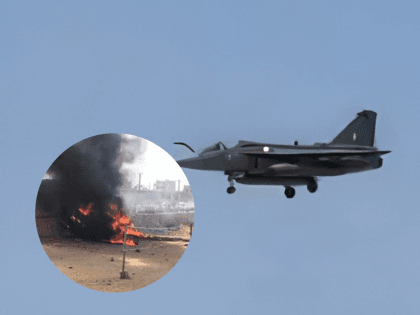Tejas Crash in Dubai Airshow Clouds India, Fighter Export Ambitions
A Tejas fighter jet crashed before international buyers at the Dubai Airshow, killing Wing Commander Namansh Syal and raising immediate doubts about overseas sales of India built combat aircraft. The mishap underscores how technical setbacks and supply chain problems leave the programme reliant on domestic orders, with long term value tied more to industrial capability than rapid export wins.

The Tejas light combat aircraft crashed on Friday during a demonstration at the Dubai Airshow, a high profile defence exhibition attended by international buyers and rival delegations, leaving India facing a setback in efforts to market a home developed fighter. Officials paid tribute to Wing Commander Namansh Syal who died in the accident, while investigators have not yet determined the cause. The crash comes amid intense diplomatic and commercial activity at the show, which this year was attended by Pakistan only six months after the two neighbours engaged in a major aerial confrontation.
The immediate commercial impact is stark. Military aviation sales are sensitive to perceptions of safety and reliability, and analysts say an airshow accident in front of potential customers will make near term export conversations more difficult. At the same time, experts note that fighter purchases are often driven by strategic and political calculations at the highest levels, meaning a single incident will not necessarily close the door on future government to government deals.
The Tejas programme was launched in the 1980s to replace ageing MiG 21 aircraft in the Indian Air Force, and has long been treated as a national priority for indigenous defence capability. Hindustan Aeronautics Ltd has 180 of the Mk 1A variant on order from India, a backstop that analysts say is likely to sustain production and maintain the jet as a national showcase even if exports stall. Deliveries have already been slowed by engine supply chain problems at GE Aerospace, an issue that has complicated timelines for serial deliveries and operational deployments.
Beyond the immediate commercial calculus, the crash raises questions about the programme's wider role in converting defence spending into domestic industrial and technological capacity. Proponents argue that even without rapid export wins, the Tejas effort has helped build testing, design and manufacturing competencies that underpin a longer term push for self reliance in defence. Critics counter that recurring technical setbacks and supply chain vulnerabilities risk undermining credibility at home and abroad unless addressed decisively.
For now, procurement officials and HAL will face pressure to demonstrate root cause analysis, corrective measures and steps to reassure both domestic forces and prospective foreign buyers. The government will also have to weigh the political costs and benefits of accelerating domestic orders to shore up the programme against the fiscal realities of defence budgets.
The Dubai incident is likely to amplify scrutiny of quality control, supply chain resilience and training protocols across India’s burgeoning defence industrial base. While a single accident is rarely decisive in state to state arms deals, the timing and visibility of this crash make it a significant hurdle for a programme that has long symbolised India’s ambitions to move beyond reliance on foreign platforms toward an indigenous defence industrial ecosystem.


